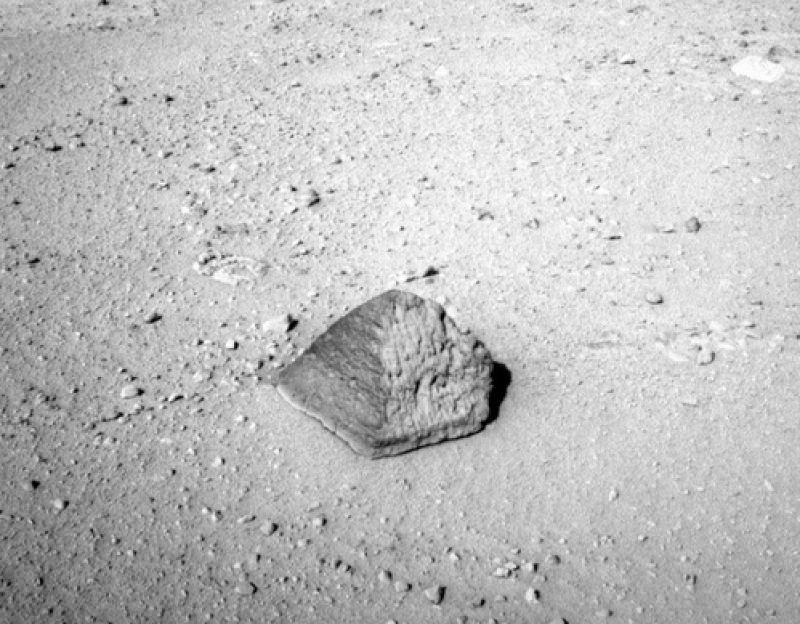The (little) pyramid from Mars
A rock with an astonishing pyramidal form was discovered by the Mars rover "Curiocity"
The pyramid is with the modest size of 25 cm height, base side – 40 cm. The formation was called "Jake Matijevic", named after the main engineer from the away team, which commands the rover. The
probe sends data and pictures from the surface of the Red planet, and collects samples from the rocks and the land. One of the goals is to keep searching for evidence that once there was water on
this planet.
Meanwhile, researchers from NASA say they have a new idea where to look for clues that
there is a way for life on Mars. They think it may be found at the bottom of some craters with formations of lakes. Their discovery provides the basis that in the McLaughlin Crater there is a group of multilayer sedimentary rocks, made of carbonates and clay, which can be formed only in the presence of water. However, there are no clues that the water was running in flows towards the crater, so probably the lake was powered by an underground source. The water in this kind of container would be much more suitable for the growth of life than the one on the surface. In the "riverbeds" on the surface were discovered some sulfates, which means that the water was full of acids. Unlike them, the underground waters would make a better environment, because of the protection from the raw conditions for life on the surface. There are no sulfates in the sediment multilayer in the bottom of the McLaughlin Crater, which means that life was probably "flowing" beneath the surface.
Meanwhile, researchers from NASA say they have a new idea where to look for clues that
there is a way for life on Mars. They think it may be found at the bottom of some craters with formations of lakes. Their discovery provides the basis that in the McLaughlin Crater there is a group of multilayer sedimentary rocks, made of carbonates and clay, which can be formed only in the presence of water. However, there are no clues that the water was running in flows towards the crater, so probably the lake was powered by an underground source. The water in this kind of container would be much more suitable for the growth of life than the one on the surface. In the "riverbeds" on the surface were discovered some sulfates, which means that the water was full of acids. Unlike them, the underground waters would make a better environment, because of the protection from the raw conditions for life on the surface. There are no sulfates in the sediment multilayer in the bottom of the McLaughlin Crater, which means that life was probably "flowing" beneath the surface.



